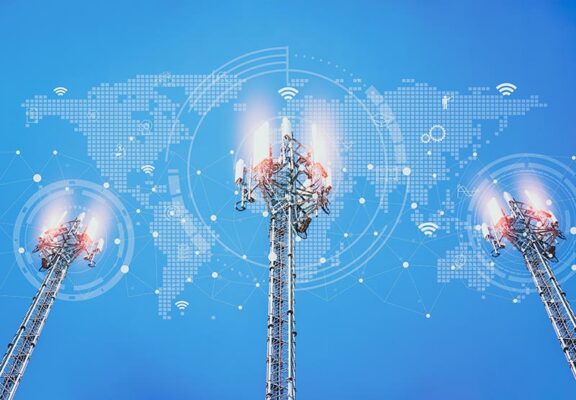Introduction
Connect Things to Apps with Speed, Ease and Scale
At the center of the Internet of Things (IoT) is the massive volume of data it generates 24/7. However, the value of this network of connected things heavily depends on how businesses capture, access and leverage this information. By selecting the right IoT platform, companies can make the right connections to solve this big data puzzle with the speed, ease and scale they need to stay competitive.
IoT and the industrial Internet of Things (IIoT) are reaching a coming of age. IT and non-IT executives are beginning to settle the debate over the potential and challenges of the IoT as they adopt technology that will cause ripple effects across the enterprise — and the industry — for years to come.
If implemented properly, IoT investments will improve every aspect of consumer lives as well as industries, governments and economies. However, paradoxically, as more competitors leverage smart devices, businesses should consider how to process an infinitely increasing volume of data in a way that helps them compete in an already aggressive economy. In fact, IDC predicts that IoT spending will continue to grow at a compound annual growth rate of 14.4% until 2021, surpassing the US$1 trillion mark.1
It’s becoming clear that companies still need to find a way to integrate the entire network no matter how many devices are connected and how much data is generated. From the front-facing edge — such as cameras and sensors that collect data — to core enterprise systems, data should move throughout the business to provide decision-makers and automated systems the information they require to get work done.
Enter Telit deviceWISE®. This IoT platform is designed specifically to solve this very real — and for some, urgent — industry problem quickly and efficiently. With faster data processing, near-instant device connectivity, tight integration across the IoT network and flexible logic, your organization can easily and reliably connect physical assets to on-premises and cloud enterprise systems and focus on developing apps, not infrastructure. In this white paper, you’ll learn how Telit provides the must-haves that can help accelerate your IoT deployment.
1. Get Started with Intelligence Right at the IoT Edge
Collecting a steady stream of data is all well and good, but it’s only the first step toward realizing the full potential of the IoT. The ultimate goal is to tap into actionable, real-time insights and automate decision-making.
In traditional IoT networks, data is transmitted from the device (the edge) to a central business system running on-premises or in the cloud. Such a setup can become a disadvantage when connected things capture an overwhelming amount of data that overloads the IT architecture. In this case, companies are forced to continuously redesign and scale their internal systems to handle escalating demand for data storage and processing as more devices are embedded into the network and data volume increases.
Move Data Processing to the Edge with Visual Logic
Telit eliminates the burden of time-consuming, expensive system upgrades and application development. By moving data processing and filtering closer to where the sensor is capturing or exchanging data, you can achieve critical advantages, such as:
- Faster transmission and processing of data generated by downstream devices
- Up-to-date information for informed, actionable, real-time decision-making
- Automated, rules-based decision-making as devices process information and retrieve relevant information from internal servers immediately
Telit’s IoT platform delivers visual logic to reduce the volume of data collected, processed and stored. Programmers and non-programmers alike can configure a logic that enables devices to process raw data and make actionable decisions at the moment the information is received and exchanged. By quickly designing visual logic segments, devices at the edge can follow data models developed and compiled in near-real-time without requiring the aid of developers and formal programming tools such as integrated development environments and cross-compilers.
Gartner predicts that “8.4 billion connected things will be in use worldwide in 2017, up 31 percent from 2016 and will reach 20.4 billion by 2020.”2
2. Implement Simplified, Real-Time, Two-Way Device Communication
For most businesses looking to take advantage of the IoT, two-way interoperability is a significant challenge. Many IoT platforms promise to connect every sensor, device, asset and software with standard tools and protocols such as application program interfaces (APIs), open process controls (OPCs) and message queuing telemetry transport (MQTTs).
However, they are most likely missing native drivers that can address the two fundamental challenges of a unified network of IoT systems:
- Network interoperability, so IoT messages can be exchanged from the device to internal IT systems and vice versa
- Semantic interoperability to enable devices and applications to process, understand and apply exchanged messages to decisions
Integrate and Operationalize Your IoT Data with Ease
Comprehensive interoperability calls for layers of standards to address a wide range of IoT challenges. With Telit, you can get the capabilities and connectivity required without dedicating the significant cost, time and effort associated with additional custom coding.
Telit’s IoT platform offers a broad array of drivers that are already written and ready to be implemented immediately with the ease of plug-and-play functionality. This capability enables you to configure devices with the platform and ensure that every piece of your IoT puzzle works well together now, as well as with any device and application implementations in the future.
Telit sends available data to any business application on demand. This means that your organization does not need to rely on open process control protocols, allowing your drivers to support solicited (polled) and unsolicited (event) interface mechanisms. The preprogrammed IoT platform also supports any operating system, whether your asset gateway software is based on Linux and Intel, Windows and Intel, or Linux and PowerPC.

“MC Remote 360-enabled machines with the Telit deviceWISE IoT platform provide increased productivity, improved efficiency and reduce downtime.”
Tony Imbrogno, Vice President of Service and Support, MC Machinery
3. Scale and Ease Systems Interoperability without Customization
The implementation of an IoT platform can create efficiencies in how business is done and how consumers experience a brand. Without a standardized protocol and secure data exchange, cross-device deployment throughout the IoT network is difficult. When you consider an estimated 8.4 billion devices were connected to the internet in 2017, this limitation can become a critical liability as that number is expected to rise to 20.4 billion within the next two years.3
Inevitably, every IoT-enabled company is faced with adding new equipment and sensors to remain competitive. However, many IoT platforms on the market today are unable to interconnect with legacy systems and protocols. For this reason, executives find themselves struggling with whether it makes sense to rip and replace existing devices running on legacy protocols just to take advantage of leading edge devices.
Make Hard-Coding Devices to Each Other and Applications a Thing of the Past
Telit understands that most organizations cannot afford to leave behind device investments accumulated over 20 or 30 years. Plus, the extra coding and customization required to make new devices work with existing devices can become a daunting cycle of work and rework as existing devices continue to age, later hindering fast response to changing market priorities.
Telit’s IoT platform offers a comprehensive portfolio of native device drivers that are preprogrammed to send available data to any business application and device on demand across over 30 platforms. Plus, you no longer need OPC protocols to support solicited (polled) and unsolicited (event) interface mechanisms.
Telit’s IoT platform also delivers native connectors for nearly any IT system enabled by solution providers such as IBM, Oracle and SAP. By leveraging predictive algorithms and machine learning with technologies including SAP HANA® and IBM Watson, your organization can optimize and accelerate outcomes, such as precise decision-making, real-time automation and higher efficiency.

“From the beginning, we wanted a provider that would allow us to start small and economical and scale when we needed it without paying extra and experiencing service interruption. For us, this company was Telit.”
Emilio Figueroa, Chief Technology Officer and Co-Founder, Jooycar
4. Tap into Data Anytime, Anywhere with Edge Logic
The edge of every IoT network is where the magic happens. A wide array of sensors, actuators and devices act as the IoT system start point and endpoint as it interacts and communicates real-time data from connected things and services to internal IT systems. For companies looking to keep up with the pace of today’s marketplace, the edge is emerging as a valuable place to accelerate data processing, decision-making and action.
Most edge platforms depend on OPC-based solutions that demand either Windows-based devices using the traditional data access framework or limited function drivers deployed with the latest universal architecture framework. Since Telit deviceWISE provides direct drivers to every device, OPC foundation standards are no longer required to poll data and continuously request data every millisecond.
Drive Faster Time to Action
With Telit’s IoT platform, businesses are free from these limitations, enabling edge devices to make decisions the moment data is received. The system runs without the central server bouncing data back and forth from devices to a backend server and back to devices again.
This approach is more efficient for your operations and runs data transactions only once, ensures data accuracy and eradicates system latency through:
- Remote management: Configuration, provisioning and firmware updates can be executed with scheduled or ad hoc triggers for a single unit, across predefined groups or throughout the entire installed base.
- Mobile network integration: Mobile communication provisioning is seamlessly integrated with mobile network operations and connected device platforms, enabling businesses to activate or deactivate devices. You can also manage SIM cards, analyze connection quality, and program all provisioning and data plan parameters.
- Easy-to-use management portal: Telit’s IoT platform is centered on a single, intuitive portal with comprehensive management and configuration capabilities for all devices and data transfers — from entry-level solutions to full-scale, enterprise-grade deployments.
“The partnership with Telit enables us to accelerate time to market for our Konect service because the integration of Telit IoT platform took less than two weeks.”
Robert Bedick, Chief Executive, Kron Instrumentos Elétricos
Accelerate Your IoT Deployment with the Right Platform
Designing and managing an optimized IoT network requires a platform that lets all devices, applications and servers seamlessly talk to one another without disruption. With Telit’s IoT platform, you can quickly connect the entire IoT value chain to improve operational productivity and increase profits.
Without the need for custom code, Telit’s IoT platform helps your organization:
- Decrease installation and operations costs by eliminating the need for custom integration
- Reduce time to market with plug-and-play connectivity that accelerates time to value
- Improve your ROI by easing interoperability without additional customization
By combining the Telit IoT platform with our innovative spirit and over 20 years of experience, deep industry insights and unmatched IoT technology expertise, your business can connect your things and enterprise systems together to respond to market shifts in real time and bring your products and services to market quickly.
Endnotes
- “IDC Forecasts Worldwide Spending on the Internet of Things to Reach $772 Billion in 2018,” International Data Corporation (IDC), December 2017.
- “Gartner Says 8.4 Billion Connected “Things” Will Be in Use in 2017, Up 31 Percent From 2016,” Gartner, February 2017.
- ibid.


